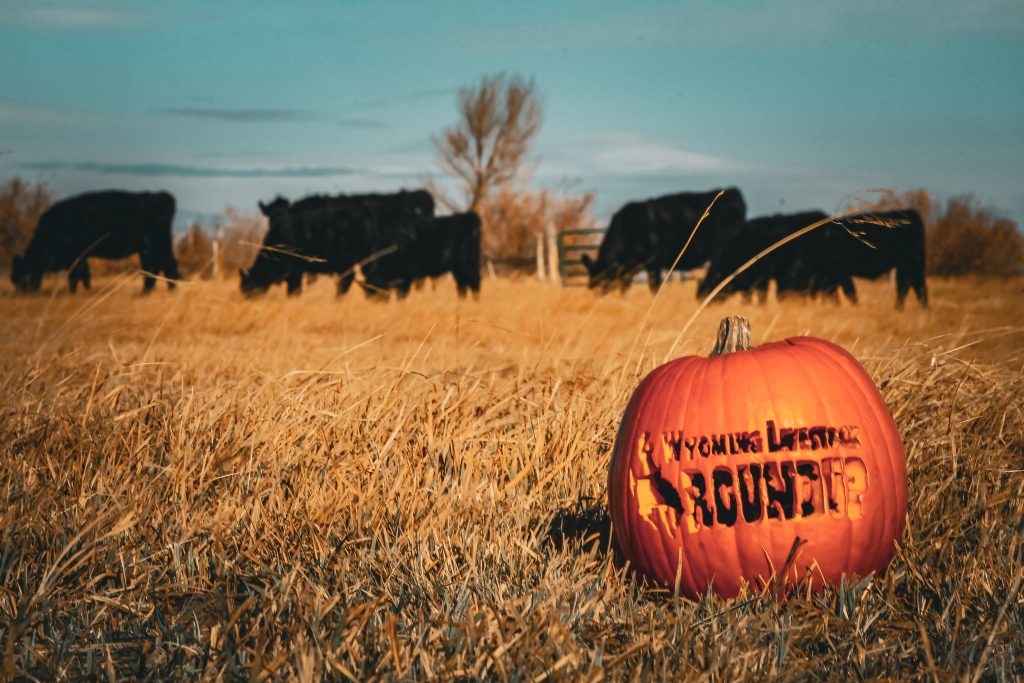Halloween Harvest: History of widely-celebrated October holiday has roots in ag

Like many major holidays, festivals and events celebrated across the world today, Halloween can be traced back to ancient agrarian communities.
Although the October holiday has transformed over time, it originally started as a celebration to mark the end of the harvest season and the beginning of winter.
Celtic origins
According to multiple sources, Halloween originated from the ancient Celtic festival of Samhain, which translates to “summer’s end,” and was celebrated from Oct. 31 to Nov. 1.
The Celtic people believed this to be a unique time of year when the boundaries between the living and the “Otherworld” – a place inhabited by the dead and supernatural creatures such as fairies, monsters and demons – grew exceptionally thin.
“The inhabitants of the Otherworld could make their way to our world and unsuspecting humans could find themselves in the Otherworld by accident of trickery,” reads a Modern Farmer article written by Andrew Amelinckx and published on Oct. 31, 2016. “Villagers would dress in frightening outfits to try to fool the dark and dangerous creatures thought to be roaming around that night.”
Although the concept of the festival remained unchanged, Celtic citizens of various countries observed the holiday a little differently, placing their own spin on annual traditions, many of which have given rise to the modern Halloween practices of today.
According to Amelinckx, in Scotland, Samhain was a night of chaos, in which young men would dress up to impersonate spirits of the dead and pull pranks on people. In Ireland, people carved turnips to use as lanterns, and in Wales, food and drink was left out for the dead.
In other Celtic communities, apples were used for fortune telling and the tradition of bobbing for apples was used to predict who one would marry.
Additionally, curious pagans believed the thin veil between worlds was an ideal time to commune with lost loved ones and to see into the future.
All Hallows’ Eve
In first century A.D., the Roman Empire overthrew Celtic lands, and the native culture was combined with Roman traditions. So, over time, Samhain became known as All Hallows’ Day.
As the influence of the Roman Catholic Church intensified, this changed yet again to All Saints’ Day, celebrated on Nov. 1 by attending church mass, lighting bonfires and dressing up as saints and angels.
The night before All Saints’ Day became known as All Hallows’ Eve, which was later shortened to “Halloween,” and became more of a secular holiday celebrated by younger individuals, in which trick-or-treating was used as a way to stem pranking and vandalism that had become associated with the night.
Ag-influenced traditions
Although modern Halloween traditions may look different, many of them are still rooted in agriculture, just as they were during ancient Celtic rule.
Instead of turning turnips into lanterns, carving pumpkins has become popular practice during the holiday season today. But, it wouldn’t be possible without hard-working farmers and producers across the nation.
According to U.S. Department of Agriculture (USDA) data from 2020-22, “Pumpkin production is widely dispersed throughout the U.S., with crop conditions varying by region. All U.S. states produce some pumpkins but six states produce more than half of them by weight.”
USDA data shows in 2022, Illinois maintained the lead in pumpkin acreage, harvesting 17,600 acres – more than twice as many acres as any of the other top five states.
In order, these include Pennsylvania, Indiana, Michigan, Virginia and California, each harvesting between 4,200 and 6,300 acres.
USDA notes pumpkin yields vary among states depending on pumpkin varieties and growing conditions.
On average, Illinois grows nearly 37,500 pumpkin pounds per acre, California grows about 27,500 per acre, Indiana grows around 20,000 pounds per acre and Michigan and Virginia grow about 17,500 pounds per acre. Pennsylvania rounds out the top five, averaging around 12,000 pounds per acre.
“In 2022, farmers in the top six pumpkin-producing states harvested more than one billion pounds of pumpkins combined,” notes USDA. “Leading in pumpkin acreage harvested and yield, Illinois produced 634 million pounds in 2022, more than the other five most productive states combined.”
The data further shows Indiana came in second, producing 161 million pounds; California came in third, producing 122 million pounds; Michigan and Pennsylvania tied for fourth, each producing around 90 million pounds and Virginia came in last, with production reported at 55 million pounds.
In addition to the popular practice of carving pumpkins, other Halloween traditions, such as trick-or-treating for candy, bobbing for apples, navigating corn mazes and enjoying hay rides, are linked to the agriculture industry.
According to the National Retail Federation’s U.S. Candy Consumption and Halloween Spending Factsheet, 95 percent of the 158 million Americans who observe Halloween purchase candy, spending an average of $2.08 billion on nearly 600 millions pounds of candy, which wouldn’t be possible without the sugarcane and cocoa beans produced by farmers across the nation.
Hannah Bugas is the managing editor of the Wyoming Livestock Roundup. Send comments on this article to roundup@wylr.net.





